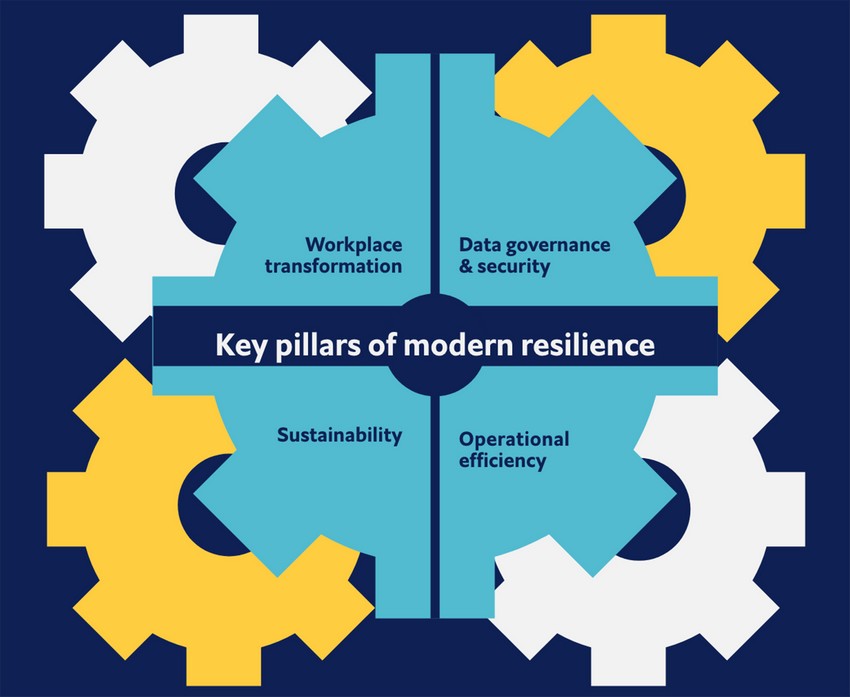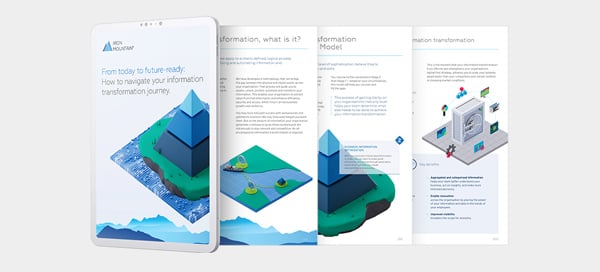The buzz about resilience. Let's get beyond it, shall we?
We've all been forced to become more resilient in the wake of the pandemic. But what does resilience actually mean?

Across the globe, we've all been forced to adapt in the wake of the pandemic–as individuals, as employees, as employers and, of course, as organisations.
But while all the workshops and town hall meetings are abuzz with great ideas about resilience, animated talk, and good intentions, one thing post-pandemic is certain:
No real progress will be made towards resiliency until it’s approached as a cross-functional team sport.
This is the only way to get buy-in up and down the enterprise - and across global teams and time zones. However, before that happens, all stakeholders need to agree on what the complex - and often misunderstood - topic of business resilience means and how buzzwords like it can impact the flow of information and the bottom line.
Today, with so many overlapping legacy terms like “disaster recovery” and “business continuity,” it’s easy to understand the post-COVID confusion. The trick is getting all parties to see that the immediacy of disaster recovery and the efficiency efforts behind business continuity are all components of the larger, longer-term topic of “resilience,” which is essentially building organisations that are nimble, flexible and able to withstand both expected and unexpected shocks. With executive-level clarity on resilience, budgets and resources are more likely to follow.
To bring your cross-functional teams up to speed on the 4 Pillars of Modern Resilience, check out the snapshot below.
Pillar 1: the reality of workplace transformation
Sure, the promise of flex hours and schedule options is a wonderful thing, except when you start to wrap your head around the impact on your staff, their productivity, and your culture and communications.
While almost 80% of executives realise that having an agile workforce is a much bigger priority since the pandemic, they have plenty of work to do in these areas:
- True cross-functional collaboration (beyond talking about it)
- Employee engagement
- Prioritisation of employee health and well-being
Is your organisation as resilient as you think?: The move to Modern Resilience doesn’t need to be an uphill battle. Get started with the 2022 global study, courtesy of Economist Impact and Iron Mountain.
Pillar 2: top-down operational efficiency
Did you know…
80% of company leaders have bought into the importance of resilience.While “buy-in” can mean different things at different organisations, you’ll only get past cross-functional planning and collaboration stages when efficiencies and consistent approval processes are embraced up and down the org. chart. Short of this, your implementation will likely come up shy of :
- Proper information-sharing and efficient decision-making processes across functions, teams, and time zones
- Top-down management support
- Full-time resources, including technology, dedicated to fostering resilience
Pillar 3: doubling down on data governance & security
Did you know…
Over 60% of business leaders see the critical necessity to assess risk and consider new information tools and technologies.Don’t fall into the 40+ percentile that has blinders on. As you surely know, post-pandemic IT cyber security risk is higher than ever. To harness it, organisations of all sizes have increased investments in hybrid work data protection and security applications. This way, proprietary information and digital assets remain as they should—proprietary.
Pillar 4: making sustainability plans last
Did you know…
80% of executives agree that having dedicated sustainability staff and resources is more important than ever.85% say more assessment and awareness of climate change risk to their business is necessary.
The only way to go from pontification to implementation is to educate all ESG (environmental, social, and governance) stakeholders, including customers, employees, suppliers, communities, and, of course, shareholders and investors, of the broader business and social implications. ESG strategies and opportunities are not fads or feel-good exercises. They are critical to doing business in an ever-changing world.
Bottom line: research shows that across the board there’s a strong positive relationship between business resilience and performance. Perhaps if we can all align on the terminology first, we can elevate resilience on the big strategy board with the resources and metrics to back it up.
Related resources
View More Resources


